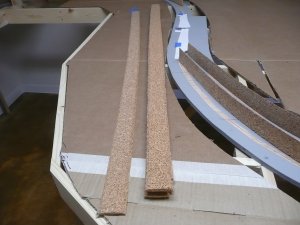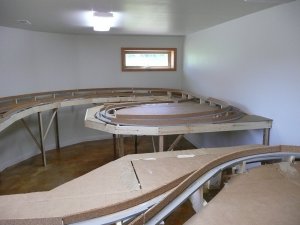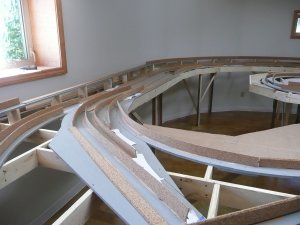Really coming together. You're thinking along the right lines to leave the subroadbed in place and connected while you put in the risers. As most commercial bridge/viaduct kits are designed with level track (don't know of any that aren't, but there may be), leaving it all connected with temporary supports across where the gaps will be, enables you to get the vertical transitions on each end to match where necessary. There are prototype trestles etc on grades and curves, so keep that in mind as well.
https://www.youtube.com/watch?v=5IK9aild6Rg
(don't forget to have your speakers "up" for those EMD's in the middle and end of the coal drag.
https://www.youtube.com/watch?v=5IK9aild6Rg
(don't forget to have your speakers "up" for those EMD's in the middle and end of the coal drag.




